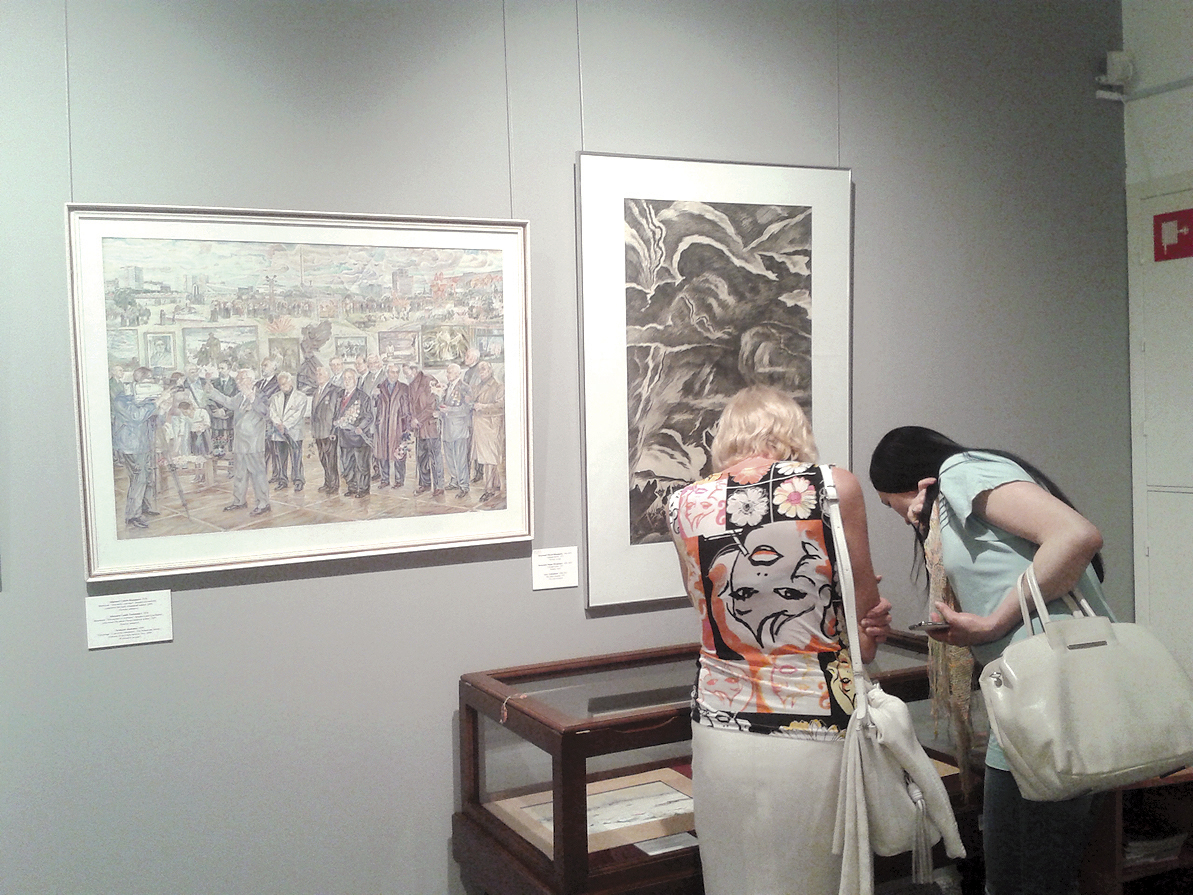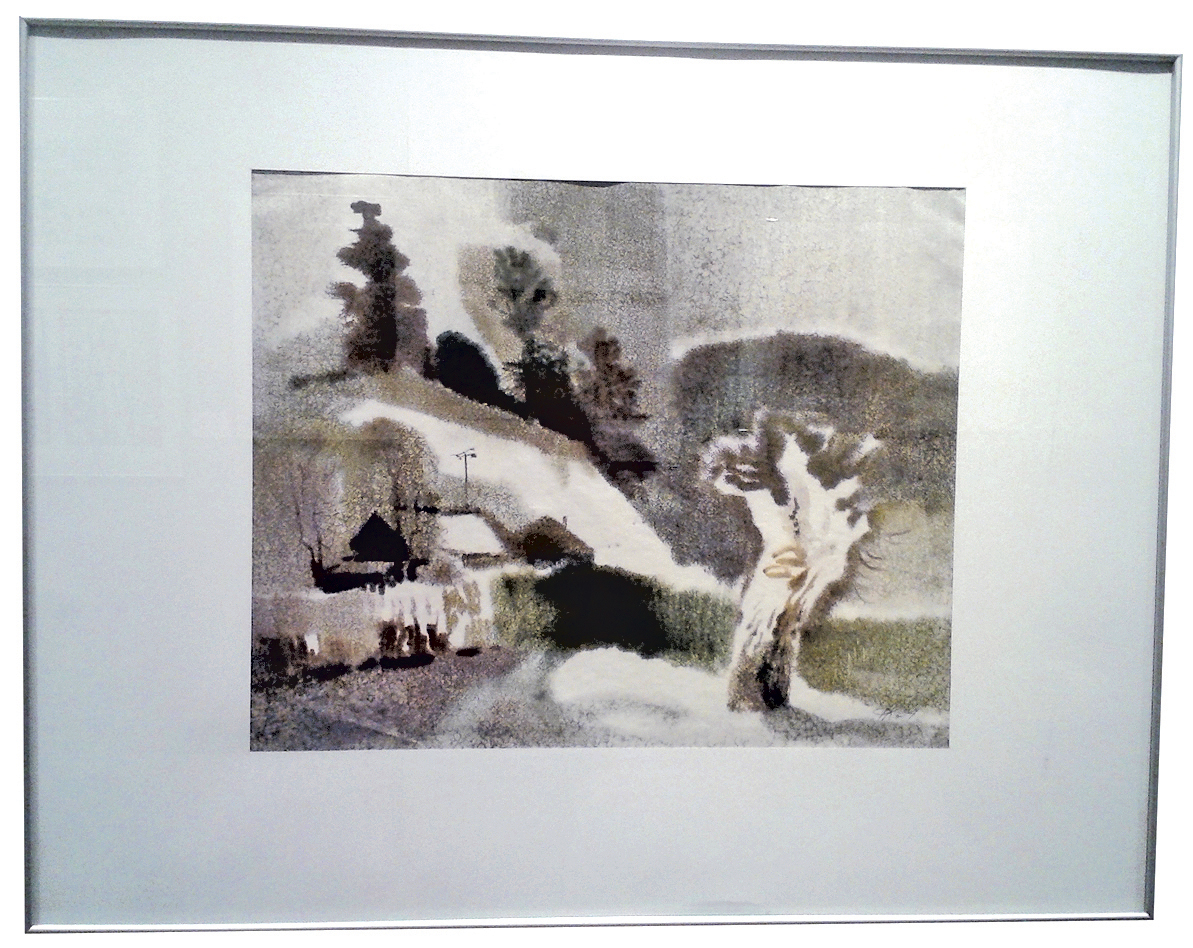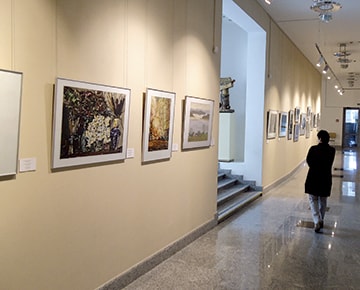
Many interesting authors on display at River of Time exhibition
The showcase features artists alive and dead, who this year see significant anniversaries of their birth. Most of the works on show date from the 1960-80s (the time period most fully represented by the museum’s collection).
The goal of the exhibition is to promote artists’ work, touching upon art history and how art reflects its time. Artists offer their personal vision of the world and that cannot be fully explored across just a handful of works, but even fragments of an artist’s creative legacy reveal something of their time, creating a mosaic of impressions.
The earliest of the works on display date back to around 1910–1920, featuring pieces by N. Mikholap, the museum’s first director, and by A. Astapovich, who studied at Petrograd School for Beaux-Art Encouragement. They sit alongside canvases by Vitebsk’s Y. Royak, who was a student of M. Chagall and K. Malevich, and K. Gedda, who spent the final part of his life in Argentina. They demonstrate stylistic diversity.

Discernment is vital
Later works by N. Duchits are valuable both as artworks and as historic documents, depicting Minsk landmarks that no longer exist. From the 1940s, on show are war-themed works by B. Zvinogrodsky, P. Pogodin, P. Lyubomudrov and V. Zakrevsky, whose destiny was largely related to Poland.
Between 1950 and 1980, major Soviet art themes were evident: idylls of rural life (Y. Busel and L. Zenevich), works on the theme of war (Y. Vykhodtsev and B. Kuzmichev), on construction (K. Petrov, V. Tkachuk), and on production (Y. Ivaneshko, I. Kapelyan and A. Rybchinsky), as well as works on the theme of history (V. Klimenko and N. Kupava). All display traditional ‘plot’ composition and portraiture (S. Abramov, Y. Batalionok, B. Pervuninskikh and V. Pimenov), or landscape features (F. Kiselev, L. Pokatashkina, L. Marchenko, V. Raltsevich, G. Surma and E. Fokina). There are also still-life works by F. Gumen, L. Kalmayeva and A. Golog. Interestingly, their realism now appears diverse and exquisite.
V. Shmatov’s canvases are sometimes contemplatively romantic. They may convey a lofty interpretation of reality, or a dramatic war theme, or the negative aspects of life via caricature, but his romanticism prevails, seeing beauty and exploring ideologically conditioned ideals, conveying hope for dreams becoming reality.

Some of the showcased artists are also known as talented teachers, having worked at Minsk Art School (L. Leitman and Y. Vykhodtsev), at the Belarusian Theatre and Art Institute (P. Lyubomudrov), and at Vitebsk Pedagogical Institute (F. Gumen). Works by several artists, including A. Astapovich and N. Mikholap (decorative vases), L. Marchenko and F. Kiselev are displayed as part of the museum’s permanent exhibition.
The exhibited pictures are like windows onto the past, making the title, River of Time, apt. Similar shows have been organised since 2008, with this the tenth so far; in some years, the museum has hosted more than one such exhibition.
An anniversary is a good occasion to remember significant artists, celebrating their contributions to art, some of which have been seen by none but museum staff for decades, and that will return to the storeroom following the exhibition. Each artist has their own style and technique, through which they portray their vision of their time.

Very few pre-Soviet artworks remain, most being dated from classical and late Soviet days, so the exhibition represents not only an array of individual approaches, but the evolution of 20th century Belarusian art.
Almost all of the artists whose works are on display are, to some extent, familiar to any interested in Belarusian art. Almost every artist featured was once a member of the Belarusian Union of Artists, although some spent most of their life abroad. M. Aizenshtadt and V. N. Rutsay, for instance, lived in Moscow. The least known are, perhaps, Yanislav Volokita and Vladimir Guletsky. The former is mostly known for his emotional narrative illustrations, which are held only at the country’s main museum in Minsk. It’s thought that he may have used a pseudonym, really being a clerk, writer and artist from Minsk, called Albert Pavlovich. Meanwhile, Vladimir Guletsky was born in Vileika. He spent many years in Siberia, but ended up in Rostov-on-Don. Several of his paintings and graphic pieces were brought to the museum with the first post-war exhibition of Belarusian art, held in 1944 in Moscow and in 1945 in Minsk. During the war, he served at the Central Headquarters of the partisan movement.

Some artists are represented by a single piece, some by several dozen. The most significant are displayed in the Belarusian art section of the permanent exhibition, in the new building of the museum.
Each period in history passes, but ripples remain, thanks to artistic legacy. Artworks are windows through which we may view past ages, differing from ours in some ways, and being alike in others.
By Veniamin Mikheev





























